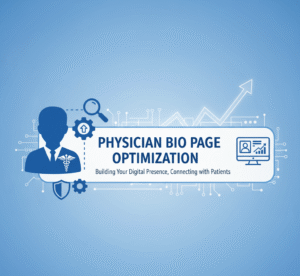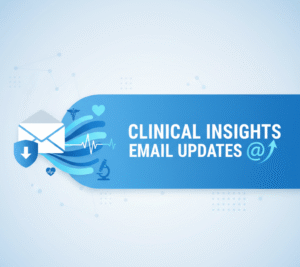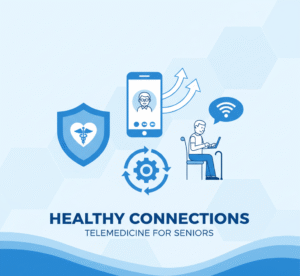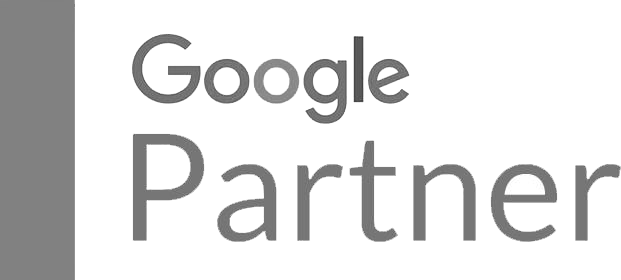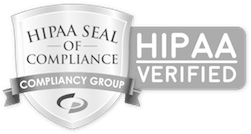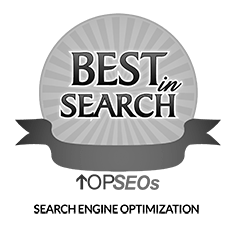“Explore the pros and cons of using PPC for patient acquisition, from its immediate visibility to the potential costs and complexity for medical and healthcare businesses.”
The waiting room is the heart of your practice. When it’s full, your practice is thriving. When it’s empty, a sense of unease can set in. In today’s digital world, filling that waiting room isn’t about placing an ad in the local paper anymore. It’s about meeting potential patients where they are—online. And when they’re online, they’re searching. They’re typing questions like “best dermatologist near me,” “emergency dental clinic open now,” or “symptoms of strep throat” into Google. Being the first answer they see is a game-changer. This is where PPC for patient acquisition enters the picture.
Pay-Per-Click (PPC) advertising, often called paid search, is one of the most powerful tools in a medical practice’s marketing arsenal. It offers a direct line to potential patients looking for your services. It sounds like a perfect solution. Instant visibility, targeted reach, and a flood of new patient calls. While PPC can deliver incredible results, it’s not a magic wand. It’s a complex, expensive, and demanding strategy that, if managed poorly, can drain your marketing budget with little to show.
This comprehensive guide will walk you through the pros and cons of using paid ads for your medical practice. We’ll skip the jargon and give you the straightforward insights you need to decide if this powerful patient acquisition strategy is the right move for you. We’ll explore how it can drive rapid growth, potential pitfalls, and why it must be balanced with long-term marketing efforts.
What Exactly is Healthcare PPC Advertising?
Before discussing the good and the bad, let’s agree on PPC. Imagine the search results page on Google. At the top, before the regular “organic” results, you’ll often see a few listings marked with a small “Ad” label. Those are PPC ads.
Pay-Per-Click means precisely what it sounds like: you, the advertiser, pay a fee each time a user clicks on your ad. You aren’t paying for the ad to be displayed simply; you’re paying for the direct engagement of a potential patient clicking through to your website or calling your practice.
Think of it like this: SEO (Search Engine Optimization) is like owning your building. It takes a long time and a lot of effort to build it (your website’s authority), but once you do, people can find you organically for years. On the other hand, PPC is like renting a massive, flashy billboard on the busiest highway in town. As long as you’re paying the rent, you get prime visibility. The moment you stop paying, the billboard comes down.
The dominant player in this space is Google Ads, but the same principles apply to other platforms like Bing Ads and social media advertising on platforms like Facebook and Instagram. Google Ads is typically the most effective for healthcare because it captures intent. A person searching on Google for “orthopedic surgeon for knee pain” has a clear and immediate need. They are actively seeking a solution, making them a high-quality potential patient. Social media ads are better for building awareness or promoting elective services, but Google captures the patient ready to book an appointment now.
A typical healthcare PPC campaign involves:
- Keyword Bidding: You bid on specific keywords or phrases you believe potential patients will use (e.g., “family doctor in Denver,” “Invisalign cost,” “urgent care open Sunday”).
- Ad Creation: You write compelling, concise ad copy encouraging users to click.
- Landing Page: You direct the user who clicks the ad to a specific page on your website (a landing page) designed to convert them into patients (e.g., a page with a booking form or a prominent phone number).
- Budgeting: You set a daily or monthly budget to control your spending.
Now that we understand the mechanics, let’s explore why many medical practices invest heavily in this strategy.
The Pros: Why PPC is a Powerful Tool for Patient Acquisition
When executed correctly, healthcare PPC advertising can be a powerful engine for growth. It offers speed and precision that few other marketing channels can match.
1. Unmatched Speed and Immediacy
This is the single most significant advantage of PPC. Building a strong organic presence through SEO is a long-term game. It can take six months, a year, or even longer for a new website or content to climb to the first page of Google for competitive keywords. That’s a long time to wait for the phone to start ringing.
PPC completely bypasses this waiting period. You can create a campaign today, and within hours of approval, your practice can appear at the very top of the search results for your chosen keywords.
This speed is invaluable in several scenarios:
- For a New Practice: You don’t have time if you’ve opened your doors. You need to start building a patient base immediately to generate revenue. PPC can provide that initial surge of patient inquiries while your long-term SEO strategy gains traction.
- Promoting a New Service: Did you invest in new high-tech equipment or bring on a specialist offering a new procedure? PPC allows you to instantly advertise this new, high-value service to a targeted audience actively searching for it.
- Responding to Market Changes: A competitor might have closed down, or a new residential area might have opened nearby. PPC gives you the agility to capitalize on these opportunities instantly.
2. Hyper-Targeted Patient Acquisition
Old-school marketing was like fishing with a giant net—you cast it wide and hoped you caught what you were looking for. Digital marketing, specifically PPC, is like fishing with a laser-guided spear. The level of targeting is exact, ensuring your marketing dollars are spent reaching only the most relevant potential patients.
Here’s how you can target your ads:
- Geographic Targeting (Geotargeting): This is fundamental for any local medical practice. You can set your ads to show only to people within a specific radius of your clinic—say, 5 or 10 miles. You can even target specific zip codes, neighborhoods, or cities. This prevents you from wasting money on clicks from people who live too far away to become patients. For example, a dental practice in downtown Chicago has no interest in paying for clicks from someone in the suburbs of Milwaukee.
- Demographic Targeting: You can narrow your audience by age, gender, parental status, and household income. This is incredibly useful for specialists. A pediatrician will want to target parents in a specific age range, while a plastic surgeon offering “mommy makeovers” can target women of a particular age group.
- Keyword Targeting is the core of paid search. You bid on the exact phrases patients are typing into the search bar, allowing you to match your service directly to their stated need. Someone searching for “weekend chiropractor appointment” is a much more qualified lead than someone vaguely searching for “back pain.”
- Time-of-Day Targeting (Ad Scheduling): Does your front desk only answer calls from 9 AM to 5 PM? You can schedule your ads to run only during those hours, ensuring that someone is there to answer when a patient clicks your “call” extension. You might do the opposite for an emergency clinic, ramping up your ad spend in the evenings and on weekends.
This precision means less wasted ad spend and a higher likelihood that the person clicking your ad is a genuinely qualified potential patient.
3. Totally Measurable and Data-Driven ROI
One of the biggest frustrations with traditional advertising (like billboards or radio spots) is measuring its direct impact. You might see an uptick in calls, but it’s hard to know if it came from that specific ad.
PPC is the complete opposite. It is one of the most measurable forms of marketing available. Every single aspect of a campaign can be tracked, measured, and analyzed. This data-driven approach allows you to understand precisely what’s working and what’s not, so you can make informed decisions to improve your healthcare advertising ROI.
Key metrics you can track include:
- Impressions: How many times was your ad shown?
- Clicks: How many people clicked on your ad?
- Click-Through Rate (CTR): The percentage of impressions that resulted in a click (CTR=Clicks÷Impressions).
- Cost Per Click (CPC): The average amount you paid for each click.
- Conversion Rate: The percentage of clicks that resulted in a desired action (a “conversion”), such as a phone call, a submitted appointment request form, or a live chat initiation.
- Cost Per Acquisition (CPA): The total cost you paid to acquire one new patient lead (CPA=TotalCost÷NumberofConversions).
By tracking these metrics, you can calculate a tangible return on investment. For instance, if you spent $2,000 on a campaign last month and it generated 40 new patient inquiries (a CPA of $50), and you know that 1 in 4 inquiries becomes a patient who is worth an average of $500 in their first year, the calculation is simple. You acquired 10 new patients, generating $5,000 in revenue from a $2,000 investment. That’s a clear, positive ROI you can take to the bank.
4. Supreme Control and Flexibility
PPC platforms give you immense control over your advertising efforts. This flexibility allows you to adapt your strategy based on performance and your practice’s needs.
- Budget Control: You have complete control over your spending. You can set a maximum daily budget, and the platform will not exceed it. You can increase the budget in real time if a campaign performs exceptionally well. Conversely, if things are slow or a campaign isn’t delivering, you can pause or lower the budget with a single click. No long-term contracts are holding you hostage.
- A/B Testing: Don’t know which ad message will resonate most with patients? With PPC, you can run multiple versions of your ads simultaneously (A/B testing) to see which one gets a better click-through rate or conversion rate. You can test different headlines, descriptions, and calls-to-action. Over time, these minor optimizations can lead to significant improvements in campaign performance and a lower cost per patient.
- Scalability: PPC campaigns are highly scalable. You can start with a small, focused campaign targeting just one or two services. As you see success and get comfortable with the process, you can easily expand your efforts to cover more services, target wider geographic areas, or increase your budget to drive more volume.
This level of control ensures that you always control your patient lead generation efforts.
The Cons: The Challenges and Risks of PPC for Patient Acquisition
While the benefits are compelling, it’s crucial to approach PPC clearly and understand its downsides. Ignoring these challenges is the fastest way to waste your marketing budget and become disillusioned with digital advertising.
1. The Cost Can Be Prohibitive
There’s no sugarcoating it: PPC for patient acquisition can be expensive. You are entering a competitive auction for a potential patient’s attention, and in the healthcare space, the competition is fierce. Large hospitals, multi-location clinics, and private equity-backed practices often have massive marketing budgets, driving up the cost of popular keywords.
The cost per click (CPC) for medical keywords can range from a few dollars to over $50 or even $100 for highly competitive terms in major metropolitan areas (think “cosmetic dentist NYC” or “Lasik surgeon Los Angeles”). If your average CPC is $15 and it takes 10 clicks to get one new patient inquiry (a 10% conversion rate), you’ve already spent $150 just for that one lead. If your practice doesn’t offer high-value services, it can be challenging to generate a positive ROI.
Furthermore, PPC operates on a “pay-to-play” model. Traffic and leads stop when you stop funding the campaigns, so it doesn’t build lasting digital assets for your practice.
2. Steep Learning Curve and Complexity
Running a successful healthcare PPC campaign is not a simple task that you can delegate to front desk employees in their spare time. It is a highly complex discipline that requires specialized knowledge, continuous attention, and analytical skill.
A successful campaign requires expertise in:
- Strategic Keyword Research: Identifying not just the obvious keywords, but also long-tail keywords (more specific, less competitive phrases) and negative keywords (terms you want to exclude to avoid irrelevant clicks). For example, a high-end cosmetic dentist would like to add “cheap,” “free,” and “Medicaid” as negative keywords.
- Compelling Ad Copywriting: Persuasive writing, persuasive ads, compliance with Google’s strict advertising policies, and fitting within tight character limits.
- Landing Page Optimization: Creating user-friendly landing pages builds trust and is designed to convert visitors into leads. Simply sending traffic to your website’s homepage is a common and costly mistake.
- Bid Management: Knowing how much to bid on different keywords and adjusting those bids based on performance, time of day, device type, and other factors.
- Conversion Tracking: Properly setting up the tracking codes and systems to accurately measure calls, form submissions, and other key actions. Without this, you’re flying blind.
Managing all these moving parts is a full-time job. Without dedicated expertise, it’s easy to make costly mistakes that burn through your budget with little to no return.
3. Navigating Strict Healthcare Advertising Regulations
This is a massive consideration unique to the medical industry. Platforms like Google have stringent policies regarding healthcare advertising to protect users. Failure to comply can lead to ad disapprovals or even a complete suspension of your advertising account, which can be challenging to reverse.
Key regulations include:
- HIPAA Compliance: While Google Ads can be used in a HIPAA-compliant manner, how you handle the data you collect is critical. You cannot use remarketing lists to imply knowledge of a person’s health status. For example, you can’t create an audience of people who visited your “cancer treatment” page and then show them ads about it across the internet. This is a significant violation.
- Restrictions on Services: Google restricts advertising for specific medical procedures, pharmaceuticals, and unproven treatments. If your practice offers services in areas like addiction treatment, certain weight-loss products, or experimental therapies, you may find your ads are consistently disapproved.
- Ad Copy Language: You cannot make unsubstantiated claims or promise guaranteed results. Language must be transparent and honest and cannot prey on users’ insecurities. For example, an ad saying, “Cure your back pain forever!” would be rejected, whereas “Find relief from chronic back pain” might be approved.
Navigating this regulatory minefield requires a deep understanding of healthcare compliance and the ad platform’s policies. Without specialized knowledge, practices trying to manage PPC in-house face a significant risk.
4. The “Pay-to-Play” Problem: No Long-Term Asset
As mentioned earlier, PPC is like renting. It provides immediate benefits, but you’re not building any equity. SEO, on the other hand, is like buying a house. Every piece of content you create, every backlink you earn, and every technical improvement you make to your website builds its long-term value and authority in the eyes of Google. This authority generates “free” organic traffic for years to come.
If you rely solely on PPC for patient lead generation, your entire flow of new patients depends on your continued ad spend. If you need to cut your marketing budget for a month, your leads will dry up overnight. A competitor with a strong SEO foundation will continue to get organic traffic and leads regardless of their monthly ad spend.
This is why a balanced approach is so critical. PPC is a fantastic tool for short-term goals and immediate results, but it should not be the only pillar of your digital marketing for healthcare strategy.
The Winning Formula: Balancing PPC with Long-Term SEO
The most successful medical practices don’t choose between PPC and SEO; they leverage the strengths in a cohesive strategy. They are not opposing forces but two sides of the same coin and work best together.
Think of it as a strategic one-two punch:
- PPC for Immediate Impact: Use paid ads to get the phone ringing immediately. It’s your tool for driving immediate patient bookings, promoting new high-margin services, and competing in a crowded market from day one. It generates revenue that can help fund your longer-term marketing efforts.
- SEO for Sustainable Growth: Invest in SEO simultaneously to build your practice’s long-term digital foundation. Create helpful, patient-focused blog content, optimize your service pages, build local citations, and gather patient reviews. This effort builds your organic rankings over time, creating a sustainable, cost-effective source of new patients that isn’t dependent on a daily ad budget.
Here’s how they directly help each other:
- Keyword Intelligence: The data you get from your PPC campaigns is a goldmine for your SEO strategy. You can see exactly which keywords are converting into patients. You can then take this proven data and focus your SEO content creation efforts on ranking organically for those high-value terms.
- Total Page-One Domination: A truly dominant strategy involves appearing in both the paid and organic sections of the search results. This significantly increases your visibility, credibility, and likelihood of a user clicking on one of your listings. It establishes your practice as the apparent authority in your field.
By running PPC campaigns for immediate leads while patiently building your SEO foundation, you create a robust and resilient patient acquisition strategy that delivers results today and for years.
Finding the Right Partner: Why Healthcare PPC Requires a Specialist
Given the complexity, the financial risk, and the strict regulatory landscape, managing PPC for patient acquisition is not a DIY project. Choosing the right digital marketing partner can be the most critical factor in the success or failure of your campaigns.
You wouldn’t ask a general practitioner to perform brain surgery. Similarly, you shouldn’t trust a generalist marketing agency with the nuanced and high-stakes world of healthcare advertising. You need a partner who lives and breathes this space—one who understands the difference between a lead and a qualified patient, knows Google’s healthcare policies inside and out, and has a proven track record of delivering a positive ROI for practices like yours.
When evaluating a potential partner, you must look for a team that doesn’t just talk about clicks and impressions. You need a team that talks about Cost Per Acquisition, patient lifetime value, and HIPAA compliance. You need a partner who is an extension of your practice, focused on the one metric that truly matters: your growth.
Grow Your Practice with InvigoMedia
This is where InvigoMedia comes in. We are not a generalist agency that happens to have a few medical clients. We are a specialized digital marketing partner built from the ground up to help medical businesses grow. Our team has years of industry experience navigating the unique challenges and opportunities of medical practice marketing.
We understand that you’re not just looking for website traffic but new patients to fill your appointment book. Our approach to healthcare PPC advertising is built on a foundation of data, transparency, and a deep understanding of the patient journey.
Here’s how we make a difference:
- Proven Expertise: We have a long track record of developing and managing successful PPC campaigns for various healthcare providers, from dental clinics and specialist surgeons to multi-location medical groups. We know what works and, just as importantly, what doesn’t.
- Tailored, Data-Driven Strategies: We don’t believe in cookie-cutter solutions. We dive deep into your practice, goals, target patient demographic, and local competition. From there, we build a custom PPC strategy to achieve your objectives and maximize your ROI.
- Compliance is Non-Negotiable: We are experts in Google’s healthcare advertising policies and HIPAA marketing guidelines. We build campaigns that are not only effective but also fully compliant, protecting your practice and your reputation.
- Transparent Reporting: We provide clear, easy-to-understand reports focusing on the metrics that matter to you. You’ll never be in the dark about how your campaigns are performing or where your marketing dollars are going. We show you your cost per lead and work with you to understand the real return on your investment.
PPC is a powerful tool, but it’s only as effective as the team wielding it. Partnering with InvigoMedia means putting your patient acquisition strategy in the hands of seasoned experts dedicated to your success.
Conclusion: Make the Informed Choice
Paid advertising offers an incredible opportunity for medical practices to achieve rapid growth and connect with new patients in a highly targeted and measurable way. The speed, control, and precision of paid search for healthcare are undeniable advantages in a competitive market.
However, it’s a path that must be walked with caution. The high costs, immense complexity, and strict regulatory hurdles present significant challenges that can lead to wasted budgets and frustration if not managed by a skilled hand.
Ultimately, PPC is not a standalone solution. Its true power is unlocked when integrated into a balanced online marketing for clinics strategy that includes a long-term investment in SEO. This dual approach provides the immediate patient flow you need today while building the sustainable digital asset that will serve your practice for years.
If you’re ready to explore how a professionally managed PPC campaign can help you achieve your practice’s growth goals, the next step is to talk to an expert.
Frequently Asked Questions (FAQs)
1. How much should a medical practice budget for PPC?
There is no one-size-fits-all answer, as the ideal budget depends heavily on your location, specialty’s competitiveness, and growth goals. A small practice in a rural area might see results with $1,000 – $2,000 per month. However, a specialty practice (like a plastic surgeon or orthodontist) in a major metropolitan city may need to invest $5,000, $10,000, or even more monthly to compete effectively. A good starting point is to determine the lifetime value of a new patient and your target Cost Per Acquisition (CPA). A professional agency can conduct a competitive analysis to recommend a realistic budget.
2. How long does it take to see results from a PPC campaign?
One of the main benefits of PPC is speed. You can start seeing traffic and leads within days, or even hours, of launching a campaign. However, “seeing results” and “optimizing for ROI” differ. It typically takes the first 1-3 months to gather enough data to refine targeting, test ad copy, and optimize landing pages. Performance will steadily improve during this period as the campaign is fine-tuned based on real-world data.
3. What’s more important for doctors: SEO or PPC?
The best answer is both. They serve different but complementary purposes. If you need new patients immediately, PPC is more important. SEO is more important if you focus on long-term, sustainable, cost-effective growth. The ideal strategy is to use PPC for immediate results while investing in SEO for your future. PPC can provide the revenue and keyword data to fuel a more innovative, more effective SEO strategy.
4. Can I run Google Ads for any medical procedure?
No. Google has strict policies that prohibit or restrict advertising for certain healthcare-related content. This includes many prescription drugs, unapproved supplements, and highly sensitive health conditions. Additionally, procedures that are considered speculative or experimental may be disallowed. Working with a marketing partner intimately familiar with these policies is crucial to avoid having your ads or entire account disapproved.
5. What is a “good” Cost Per Acquisition (CPA) in healthcare?
A “good” CPA is entirely relative to the value of the patient you are acquiring. For a general dentist, a new patient might have a first-year value of $600. A CPA of $150 would be fantastic in this case. For an orthopedic surgeon, a single new patient for a knee replacement could be worth tens of thousands of dollars. A CPA of $500 or even $1,000 could be incredibly profitable. The key is first to understand the lifetime value of a patient for your specific services and then determine an acceptable CPA that allows for a healthy return on investment.


